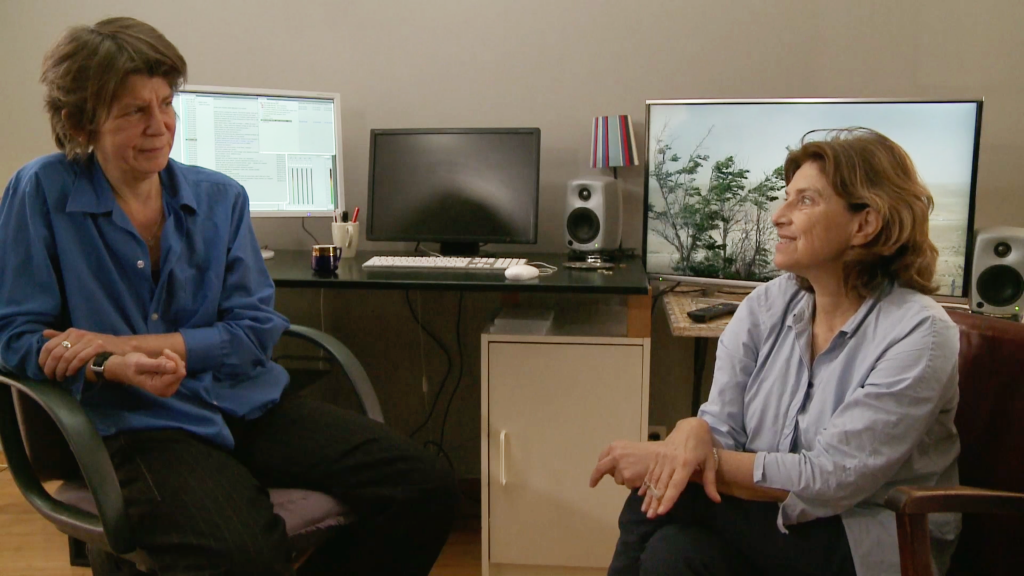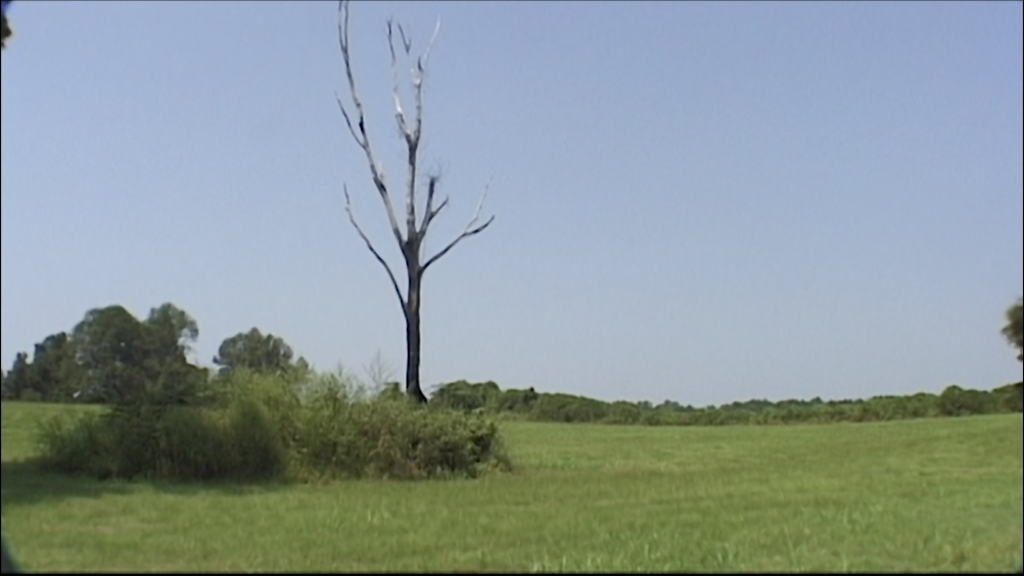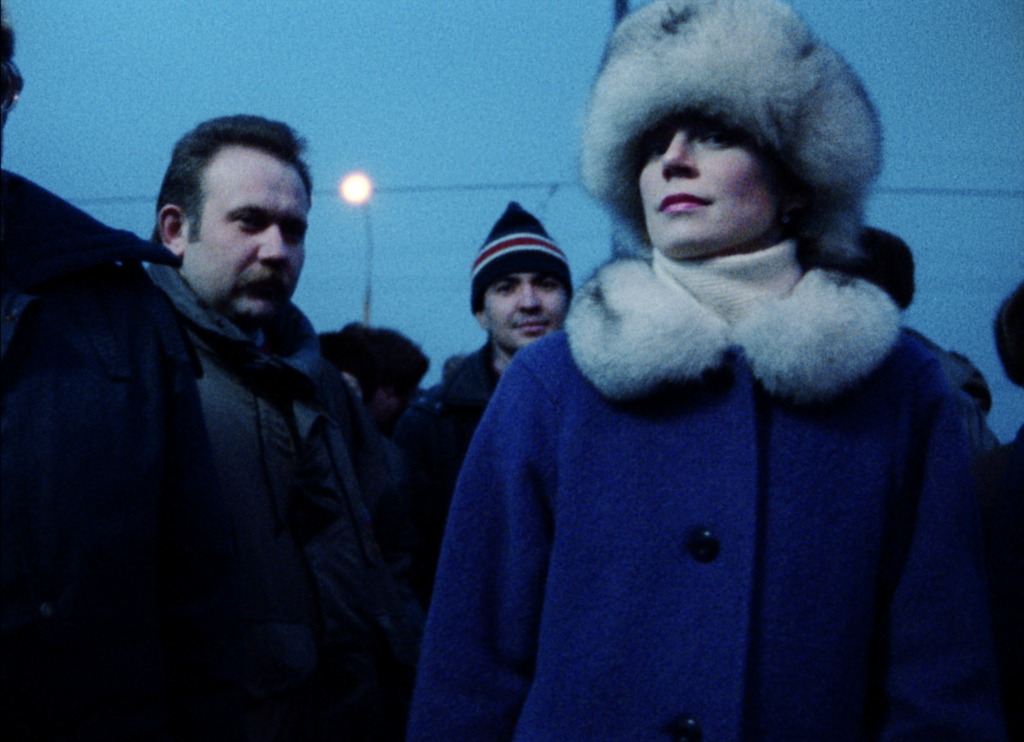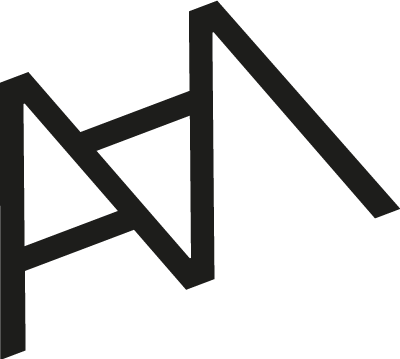
The art of editing
I have a problem with the term “master class,” because I don’t feel like I’m a master. The important thing in editing is to be willing to get lost and not to master everything. That’s why the word “master” doesn’t seem right. But at the same time, perhaps the real master is the one who knows how to get lost, in order to always stay in motion.
When I’m asked about my approach to editing, I always insist on the fact that you need to discover while doing. It’s important to know where you’re starting from, but you have to take the risk of not knowing where you’re going. That reminds me of what happened this morning: I wanted to see this conference room to see where I would be starting from, where I would be talking to you. However, I didn’t want to do too much preparation for this lecture. So today I’ll say a few words about how I became an editor and how I came to understand my own trajectory.
Chinese philosophy and civilization
I never really made a decision to become an editor. In any case, I didn’t decide I would be an editor when I was young, I didn’t follow a career path. It’s important for me to say that, because too often young people are asked to have a well-defined and realistic life plan, to prove their efficiency, and to know how to sell themselves. Yet it’s by being open to surprises and movement, by following your passions, even if they seem disconnected from what is referred to as reality, that you build your life, or rather that you discover it. Every day I become a little more aware of the extent to which all the paths I tried out, the passions I followed, and the encounters I believed in nourished the person I am today, what I do and how I do it.
When I was young, I had a passion for Chinese civilization and thought. I was disturbed and fascinated by my discovery of the notion of emptiness as an active element, by the importance of “letting-happen,” and by the idea that strength comes from patience and flexibility. And I also really liked the idea that in Chinese, saying or writing a word was like telling a story.
In Chinese script, combining different images creates a meaning. For example, the moon combined with the sun means brightness and a pig under a roof means a house or home. Chinese script is far more than a transcription of spoken language. Each mark has a codified meaning. But beneath this first significant layer, there are other deeper meanings, “always ready to emerge,” as François Cheng puts it. I immediately liked this constant tension between an apparent linearity and the temptation to escape it, as if in echo to my ambiguous relationship to logic, which both attracts and worries me. François Cheng also says that the Chinese language is not conceived as a system that describes the world but rather as a representation that organizes links and triggers meanings by bringing to light the hidden connections between things, as well as between man and the living world.1
In Taoist philosophy, one find the idea that you don’t explain everything, that you don’t force things but let them come naturally. You create a movement. The Taoists consider that life is nothing other than this movement. As François Jullien puts it, “you have to get away from a spectacular conception of the effect to understand that an effect is all the greater when it is not aimed for, but is an indirect result of a process, and that it is discreet.”2 This suggests that the process and the effect are connected, and that meaning arises from this back-and-forth. The notion of movement is connected to an important issue in Taoism: emptiness. Taoist emptiness is the opposite of a no man’s land. It is the place where transformations can take place and where connections between things can be created. It is the place where things refuse to be set in stone and where the life force gathers, making it possible for meaning to arise.
The notion of emptiness is also central in Chinese pictorial art. Emptiness upsets linear perspective and enables a connection between the painting and the person looking at it. When I was studying Chinese civilization, I was struck by a story. The painters of Chinese antiquity considered nature so beautiful and complex that it was useless to try and faithfully reproduce it. They decided to paint in black and white in order to allow viewers to imagine the colors. It is this space left to our imagination that sets us in motion, sparks our thoughts, and creates our own relationship to the work. Chinese painting is thought in motion, connecting philosophy, art, and the art of life.
I follow these principles in editing. I’m not looking for a film to describe a reality, as is often expected of documentaries, or to tell a story, as is often expected of fiction films. I’m trying to create a space in which viewers can create their own connections with the film, so that all viewers can feel, receive, and experience the film in their own way. I’m looking for a film to provoke thought and to lead people to question themselves and the world.
Politics and cinema
While I was studying Chinese civilization, I also worked at the Centre Audiovisuel Simone de Beauvoir, a center for archiving and producing films by women, founded in 1981 by Delphine Seyrig, Carole Roussopoulos, and Iona Wieder. The Centre Simone de Beauvoir is how I met Chantal Akerman, when Delphine asked me to help her with a video recording of the play Letters Home.3
I started as a video technician, without any training, learning as I went. These were the beginnings of my working life, as well as my beginning at the Centre Simone de Beauvoir. We were learning and discovering together. I really liked the center’s political focus and felt a strong connection to it. I understood and supported the necessity of a space where women came together to create and invent things. But at the same time, I was a little disturbed by what could be called a positive discrimination. I felt that I didn’t want to stay in a protected environment, I wanted to be confronted with the world. I had the impression that politically that would be a better fit for me.
At a certain point, I came to feel I needed a diploma. But I didn’t want to go to film school. I didn’t want to “learn art” in an academic setting, and I didn’t like the idea of being taught how to think about cinema. So I decided to follow a technical curriculum, and I enrolled at the Louis Lumière school for evening classes.
In 1984, I began to work with Chantal Akerman, initially on relatively little-known short films. I operated the camera and did the editing. Then in 1986 I edited Letters Home, a film based on the play through which we had met. During the editing of this film, I discovered a calm within myself that I had previously not suspected. It was a magical moment. As much as I was anxious and indecisive in everyday life, here I felt an infinite confidence in what was to come. Anxiety often comes from an urge to control things, an urge that is impossible to satisfy and triggers a feverish search for efficacy. I was very far from all that. I simply felt I was present.
Chantal would never tell me her intentions. In fact, she often didn’t know ahead of time what she was going to film. She didn’t like to be asked what she was looking for. She said that if you’ve found what you’re looking for, it’s no longer worth making a film. Her way of making films intersected with my own path: let things happen, respect movement, and don’t force meaning.
I’ve often been asked if Chantal Akerman’s work was political. I think that’s obvious. Chantal’s films are political, not because they deal with political subjects, but because they set us in motion. They put us directly in relation with the world and ourselves. Chantal didn’t want to copy reality or represent it. She didn’t want to explain anything, because explanations prevent questions. In her films, the present and the visible resonate with the invisible and the hidden. And these resonances, these shifts, open a space for thought.
It’s difficult to show clips from films when you’re talking about editing, because editing is a question of rhythm, tensions, and resonances, which involves the entire film. A sequence can be composed differently depending on where it falls in the film. It can seem long when seen alone, and short when seen in the film. Or vice versa. So, the best thing I can do for this lecture is to show the beginning of a film. I’m going to suggest that we watch the first ten minutes of Chantal Akerman’s documentary Sud.
Sud
Sud was shot in the American South. Chantal went down there, attracted by Baldwin and Faulkner. Sud’s strength is the dialectic between present and past. The film begins gently, nearly peacefully. People talk about the present, everything seems to be better than it used to be. And little by little, in this quiet landscape, you start to feel an anxiety. The strident sound of the insects becomes threatening, and so do the trees. We hear about slavery and lynching. The tension grows increasingly powerful, and we start to question what we saw at the beginning.

We often listened to Billie Holliday’s Strange Fruit during the editing process. We were even talking about putting the song in the film. Ultimately, we didn’t do it. We didn’t even try. But we put in the trees. One tree, two trees, three trees…When you look at those trees in the film, you can’t help thinking about hangings. And the shot where you see prisoners working in a cotton field conjures up the memory of slavery. What guided me during the construction of Sud was Chantal’s extreme attention to the present. We don’t show or describe the past, but it is brought up by the present.
Chantal hadn’t planned for the framework of Sud to be the story of James Byrd Jr.’s lynching by white supremacists. Before leaving for what was supposed to be a location scout but turned into the shoot, she was only talking about the area’s oppressive landscapes and its silence. She was practically obsessed. Silence and crickets. But the day she got to Jasper was the commemoration of James Byrd Jr.’s murder. She filmed it and it became a central sequence in the film. Once again, the present was bringing her back to the past.
Sud is not simply a film about lynching and the enslavement of black people in the United States. It is a film about the violence of the world and the way history haunts landscapes and becomes a part of our gaze. By going beyond the categories of good and evil and allowing a space of dignity for each character, including those who speak the most horrible things, it is a film that shakes us directly and questions our own way of looking at the other and our relationship to humanity.
Relationship with directors
An important part of the film takes place when I discover the rushes with the director. I watch, I listen, I absorb, I feel like a photosensitive surface. It’s an intense and fascinating moment, but also one that is exhausting. During this first viewing, I’m not judging. I’m trying to feel what can be constructed. And at the same time, I’m also holding myself back, I have to resist the reassuring temptation to find a structure too quickly and lock in the film. I take notes, always by hand. Writing by hand allows me to preserve the memory of my first impressions and to return to it.
After viewing the rushes, the editing starts. I always need a moment to be alone with the material. It can be a few hours, one morning, a few days. It’s like discovering an unknown space. Sometimes I try things. It’s a peculiar moment, because I’m alone, but at the same time not really. I know and feel that the director is not far away. The director’s “absent presence,” or rather the director’s “present absence” allows me to let myself be guided by my intuition and let a kind of unconscious motion be revealed. People often think that when there are two of you it’s hard to make decisions. On the contrary, I feel more freedom when the other person is present. When you’re alone faced with the sounds and images, you ask yourself why: “Why am I doing this?” “Is it any good?” On the other hand, when you know the other person isn’t far away and will be there to re-explore and revisit the film with you, you can free yourself from the question of why.
During editing, words can be dangerous. The film’s momentum can be killed by words that describe intentions, that precipitate it toward a conclusion or claim to see through its mysteries. But some words help us. Those that suggest, that disrupt, that discover fault lines and send us on alternate routes. The words written in my notebook are very simple. They are often descriptions—colors, sounds, shapes—sometimes sensations but never interpretations. I don’t like explaining what I’m trying to do to a director, because those words would affect the director’s perception. I prefer to avoid any preconceived idea, any reasoning that could arise in the director’s mind before discovering the combination of images. That’s why I don’t want the director to look at the timeline, the way so many people do today. The important thing is what takes place on the screen at the very moment when the images and sounds appear. That’s where the film is.
It’s obvious that the relationship between director and editor is based on trust. But trusting each other in the work doesn’t mean you always agree. It means that you feel like you’re moving in sync, with the same tension. You stop needing to be self-protective and you surrender control and you really listen to yourself, to the person you’re working with, and the images. It’s being ready to let go of your certainties and forget your decisions in order to allow the film to grow.
D’Est: direction and chance
It’s hard to explain what guides me when I put one image after another, when I cut a shot, or when I place a sound. I don’t really have a method. What I can say is that most of the time, I need to start at the beginning. Placing the first shot is like laying the foundation stone of a house; it’s nearly nothing, but at the same time it’s a lot, because it’s a birth. There is nothing, and then there is. Sometimes the first shot is obvious from when you’re logging the footage, sometimes on the contrary it takes a long time to emerge. The beginning of a film opens a space that brings out the following shots.
I like to give myself over to the film’s temporality. I don’t want to know more than the film or to get ahead of it. I like us to discover together and move forward together. The more the film grows, the more it’s the film that guides me. As if it existed in and of itself, as if it was forging its own path.
That’s why I need to be totally attentive to the material, and sometimes even to lose myself. The images and the sounds are not material that can be twisted and turned to be subjected to the necessity or the logic of a meaning planned ahead, but on the contrary living matter that must be listened to, looked at, sculpted, associated, paced, and joined with respect. With respect means without assigning them a role, but listening to their movements, their timing, and their mysteries. In doing so, one discovers a kind of new territory, and new meanings arise, meanings that are not set in place.
I remember editing the film D’Est with Chantal Akerman. It was like a composition, both in the musical and visual sense of the term. We were sculpting in time and space and looking for the right rhythm. We were editing the way Chantal had shot the film, following our intuition, without trying to understand. We said very simple things to each other; we talked about colors, light, clashes, ruptures, contrasts, night and day, exteriors and interiors, violence, softness, the sound of footsteps in the snow or of tires screeching on icy roads. When we watched the long tracking shots on the faces of people waiting, we talked about their gazes, the slowness of their movements, their smiles, their beauty, and sometimes of their sadness. But we never mentioned what these images made us think of. We could feel it, but if we had put it into words, it would have slowed our momentum, it would have weighed down our actions. We knew without knowing, and that worked for us. Words only appeared a year later (1995), when we were editing the installation D’Est au bord de la fiction, like echoes to the images. These words became those of the installation’s twenty-fifth screen, spoken by Chantal: “Yesterday, today, and tomorrow, there were, there will be, there are at this very moment, / people whom history, which no longer even has a capital H, who history has struck down, people who were waiting there, packed together to be killed, beaten, or starved, or who walk without knowing where they are going, in groups or alone. / There is nothing to do. It is obsessive and I am obsessed. / Despite the cello, despite cinema. / Once the film is finished, I said to myself, so that’s what it was. That again.”

Too often people think that when editing you have to start by working on the narrative through finding the film’s structure, and then move on to its rhythm by refining the length of the shots and sequences. I find that impossible. That would be like separating content from form, thought from the perceptible. Rhythm is the heart of the film, its breath. It is also the association of colors, shapes, and lines. Henri Matisse said that “a successful painting is a condensation of controlled rhythms.” The search for the right rhythm is the creation and modelling of an emptiness both temporal and spatial in which a network of resonances, secret links, and echoes is gradually created. If the rhythm is right, you can feel the tremors and vibrations, the nearly impalpable movements that appear within a shot and be moved by them without knowing why. These are the emotions that construct the narrative.
Working on the rhythm is also listening to the absence, in other words working with the images that don’t exist, without trying to fill the gaps. It is being wary of the reflex to be exhaustive and to avoid “solutions” aimed at making up for “errors” on the shoot. Because sometimes the absence of an image is the central element of a film, around which everything is built. Respecting absence as a significant element is putting your trust in the unconscious physical action and knowing how to welcome chance.
Physical actions and the time of the film
Editing on celluloid involved a ritual of physical actions that no longer exist today. The need to manipulate the film created a space between the physical action and the “result,” which could be called the process time. Our hands were busy but our minds could drift off. We could forget any objective. Digital editing has erased this time for meditation. Now you just need to click. But you can always recreate a ritual and prevent yourself from going too fast. When I have the feeling that things are going too fast, I get up, I walk around a little, I have a coffee or look out the window. It’s important to create this coming-and-going relationship with the film, to have the time to forget. Otherwise we try and try again and again, frenetically, until we lose our relationship with the images. This often happens to young editors. In fact, I often hear them say that they’re going to “test” or “approve” a version of the edit. You test a light bulb or a battery, you approve an invoice, but you don’t test or approve a film. A film is something you watch, listen to, feel, experience, and question. Maybe I put too much emphasis on words. But the words we speak say a lot about us and the times we’re living in.
The advice I often give is to slow down, to respect the time of artistic creation. You have to embark on an edit with humility, I would nearly say with naivety. This process of organized groping around in the dark is what allows the film to go beyond its subject, to stay alive, to continue to move and breathe once it is finished. A living film is a film that is not locked in to a specific meaning but is on the contrary constantly creating different emotions, different links, and different echoes. My definition of a classic work of art would be a work that is free and open, that grows and evolves in each of us, a work that is always in motion, which can be endlessly interpreted and reinterpreted throughout time.
Translated by Nicholas Elliott
1 “Chinese script, like cosmology, proposes to capture the hidden link between things and to establish connections between man and the living universe through a vast network of signs. In this network, each character appears as a being of ink.” François Cheng, Et le souffle devint signe, 2001.
2 François Jullien, Traité de l’efficacité, 1996.
3 Letters Home is a play by Rose Leyman Goldenberg, based on Sylvia Plath’s correspondence with her mother. This 1984 production was directed by François Merle and starred Delphine and Coralie Seyrig.
